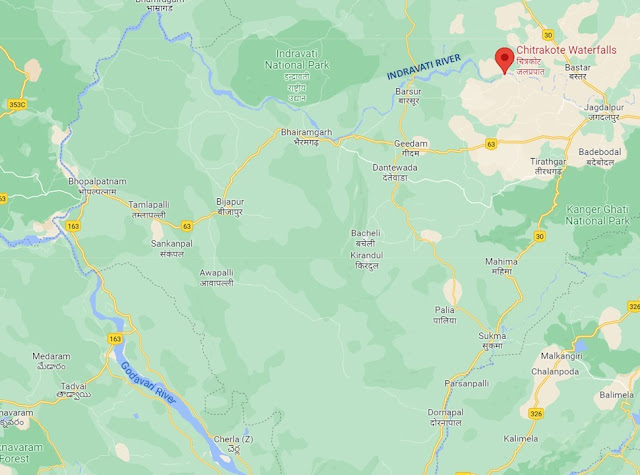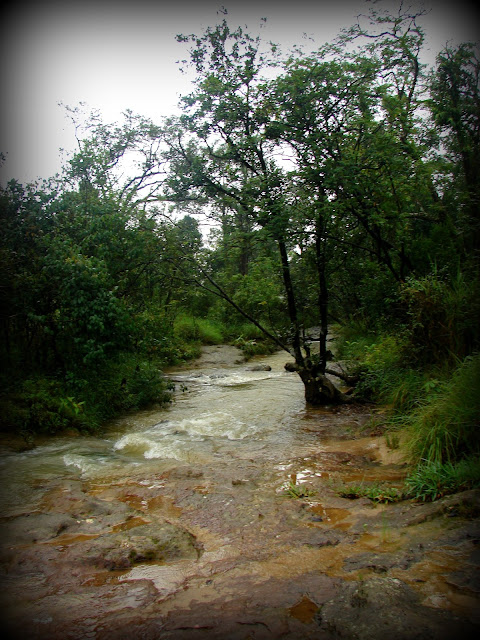Shillong is the capital of the Indian State of Meghalaya and the headquarters of its East Khasi Hills district. Nongstoin is the headquarters of the West Khasi Hills district. Shyllong, a local native deity, gives this City its name. Its old name was Yeddo and Lewduh. It was a favorite destination of the British when the East India Company occupied India. They found a climate similar to Scotland and called it the Scotland of the East. In 1874 after the formation of the state of Assam, Shillong was made its Capital. In 1972 after the division of Assam, Shillong was made a part of Meghalaya, and Dispur became the state Capital.
 |
| Hills of Meghalaya |
 |
| Mary Help of Christians Cathedral |
My mom grew up in Shillong and has very fond memories of the city. In my childhood, we spent many a summer in this beautiful city. Honestly, Shillong has changed a lot now. It was prettier when we were kids. Now it has grown and looks like any other City. The beautiful mountains are now covered with concrete and buildings. However, outside Shillong, much of Meghalaya is still untouched, unexplored, and free from urbanization which is in one way a blessing. Urbanization often ruins the natural ecosystem.
History of the Khasis
Legend of Origin
The Khasis are an indigenous tribe who probably migrated from southeast Asia (most likely from the great plains of the Mekong River in Cambodia) through Myanmar and Bangladesh and are of Mon-Khmer origin. The Khasis are said to be one of the first tribes to migrate to India.
 |
| The origin of the Austroasiatic people is probably the great plains of the Mekong Basin including Laos and Cambodia. Khasic, Munda, and Nicobarese are the only three surviving Southern Austroasiatic languages spoken |
Legend has it that the Khasis are a direct descendent of Hynniew Trep (meaning 'seven huts' in Khasi) who was the equivalent of Adam in the Bible (the first human created by God). Hynniew Trep and his seven sons belonged to 7 of the 16 clans of Heaven (Khadhynniew Trep - Heavenly huts). They descended to Earth from Heaven through a sacred vine, located at U Lum Sohpetbneng called Khynriam Ka Brew Ka Bneng which meant the 'Golden vine bridge of heaven', a kind of living root-ladder-like bridge connecting Heaven and Earth. The 7 clans were called Ki HynniewTrep (people of seven huts) and their land was called Ri HiniewTrep (The land of the seven huts). The seven sons were Khynriam, Pnar, Bhoi, War, Maram, Lyngngam, and Diko (extinct now) who founded the seven Khasi tribes. However, many sociologists believe, that Khasis do not have sub-tribes but are classified by their place of habitat.
Ramew, Mother Earth, and Basa her husband were created by God (U Blei Trai Kynrad) as a part of the Universe. Over time Ramew felt lonely and requested God for company. God blessed them with 5 children in the form of Moon (son), Sun, Water, Wind, and Fire (daughters). Ramew and Basa were happy, yet there was emptiness since the beautiful garden of Earth nurtured by Ramew, Basa and their Children did not have anyone who could avail and enjoy this nature's trove. Realizing, the need, God then sent 7 of his clans to Earth. The remaining 9 clans remained in Heaven. However, God gave the condition that as long as the seven clans lived a righteous life, they could visit Heaven through the bridge but the day they chose the dark paths, the living bridge would wither and die and so it did when the clans began to fight among themselves and cut down a sacred tree at Lum Diengiei.
 |
| The places formed by legends |
 |
| The location of the seven huts |
The Khasis like the Jaintias are matrilineal and matrilocal. The youngest daughter inherits the property and takes the responsibility of the family. In the absence of a daughter, the mother's youngest sister inherits the property and family responsibility. The surname is passed down by the mother and the groom moves to the bride's family.
The Khasis originally were nature worshippers and their religion was called Niam Tre or Niam Khasi. Later many converted to Christianity and Islam or adopted the Hindu way of life.
Khasi Kingdom
The Khasi kingdom comprised 25 sovereign states (Hima) under 25 powerful Chiefs (Syiem). Later, many of these states were annexed by the Jaintia Kingdom. By the 19th century, the entire Khasi kingdom came under British rule and became a part of the Assam Province. In 1830, the Khasis led by Tirot Singh, the Chief of Nongkhalaw, revolted against the British but were eventually defeated after a four-year-long uprising.
 |
| The 25 Khasi States before independence |
Places of interest
 |
| War's Lake, aerial view from Google Earth |
 |
| Pamphyrnai Lake, aerial view from Google Earth |
 |
| Lum Symper, aerial view from Google Earth |
 |
Dingding-Kohlangat Falls, aerial view from Google Earth
 | Double Root Bridge near Cherrapunji. (Picture source: Official Meghalaya Tourism Facebook Page)
|
 | Kynrem waterfall (Picture source: Official Meghalaya Tourism Facebook Page)
|
 | Aerial view of Kynrem Falls from Google Earth
|
|




.jpg)

































































